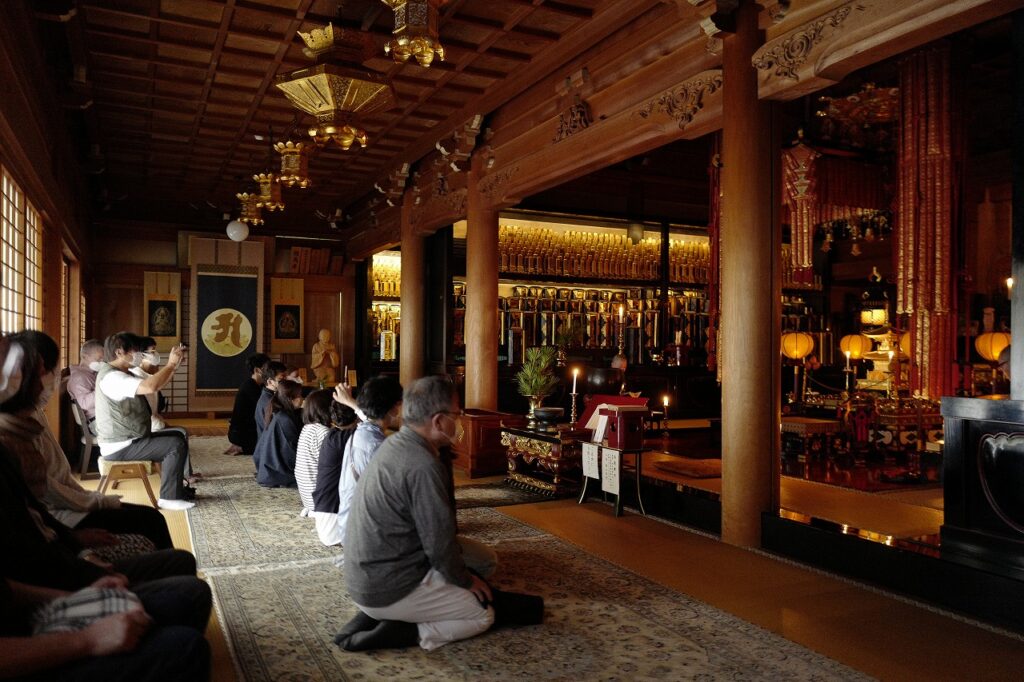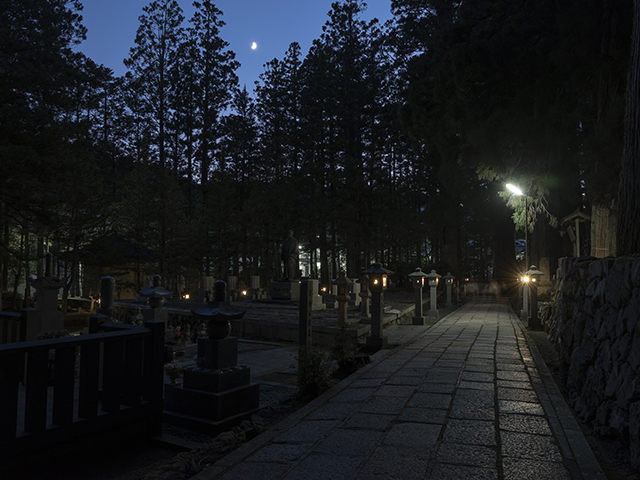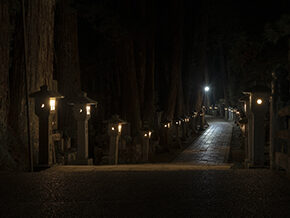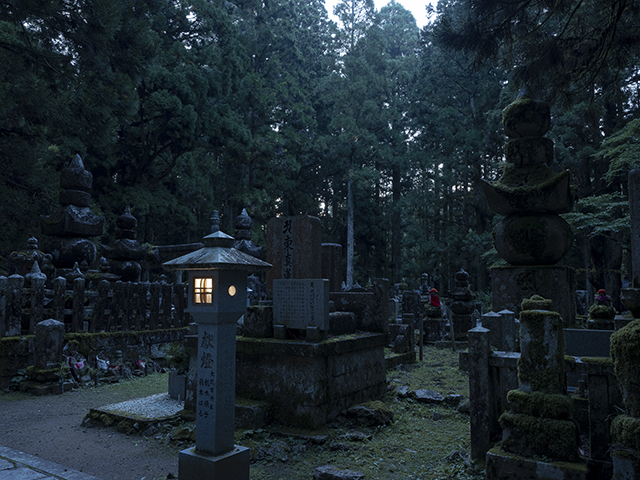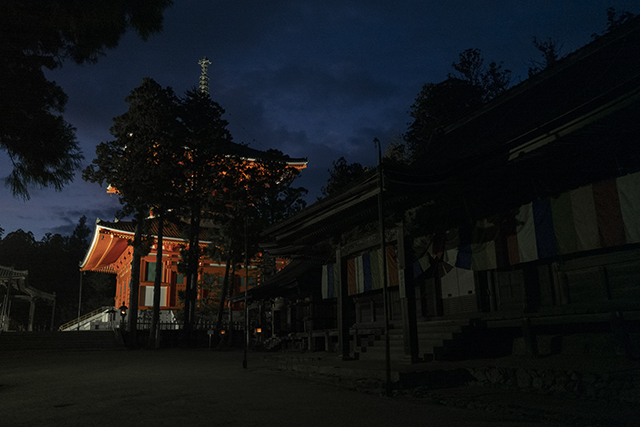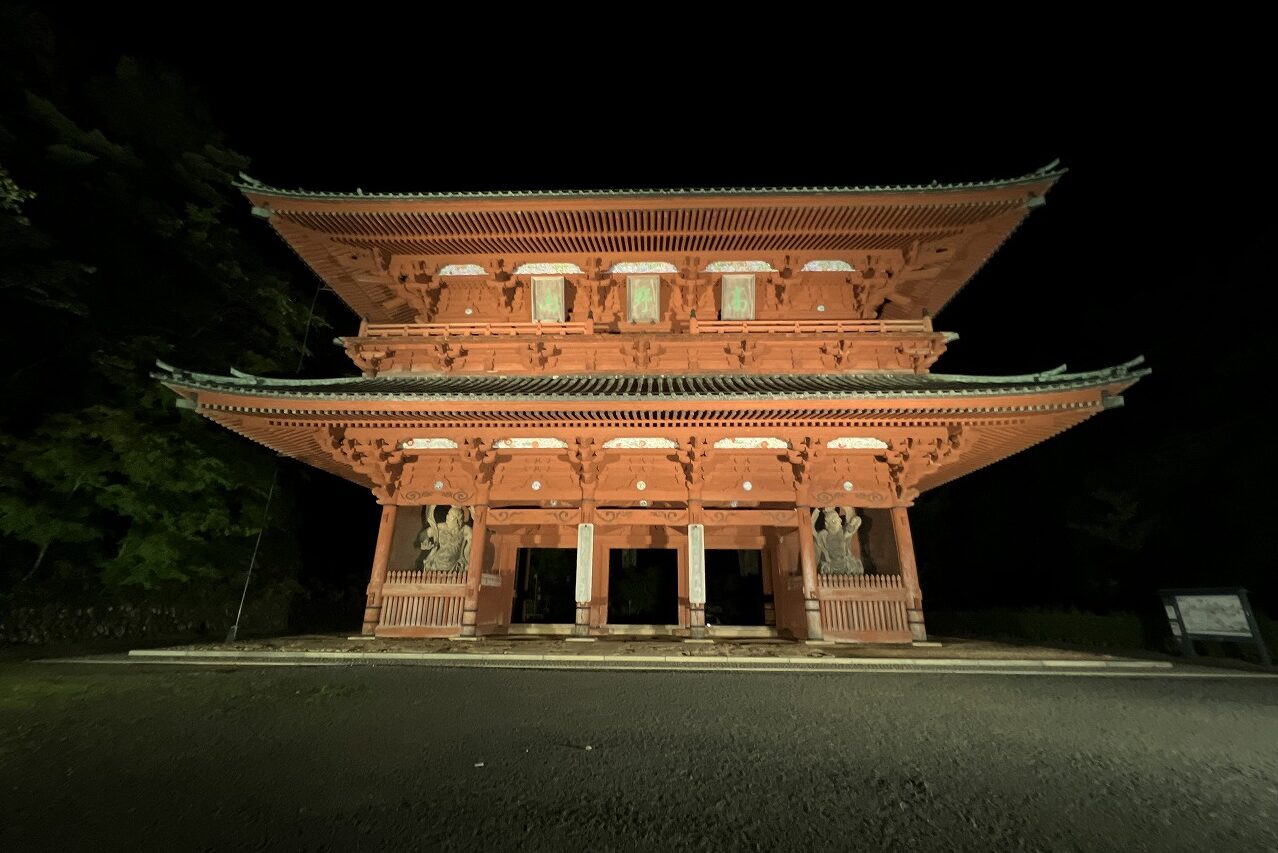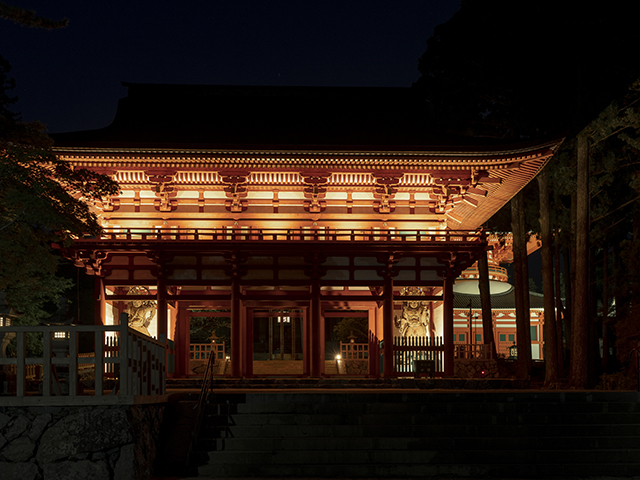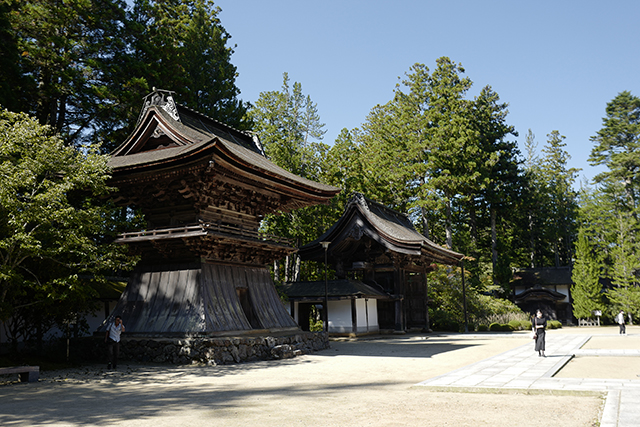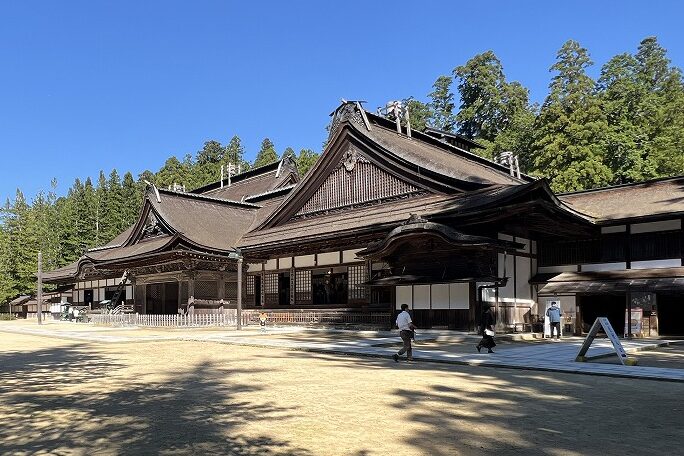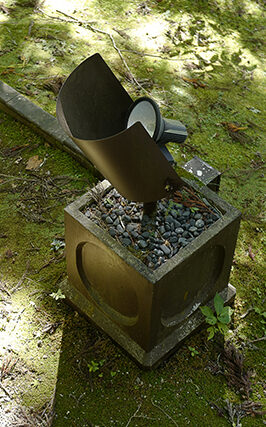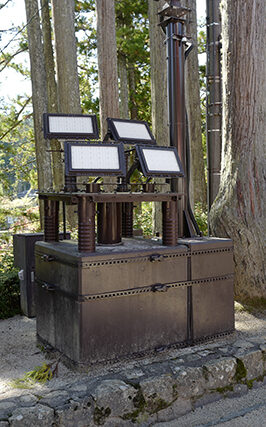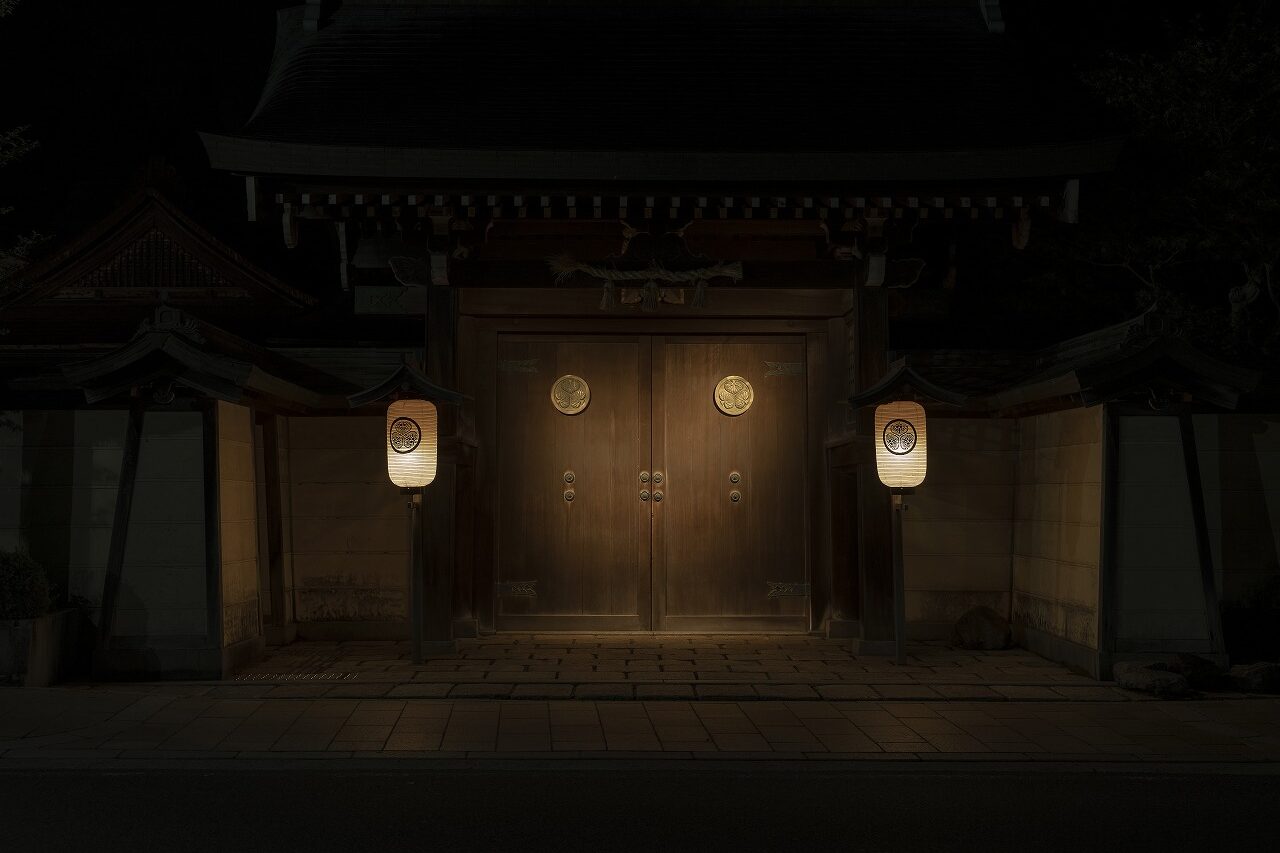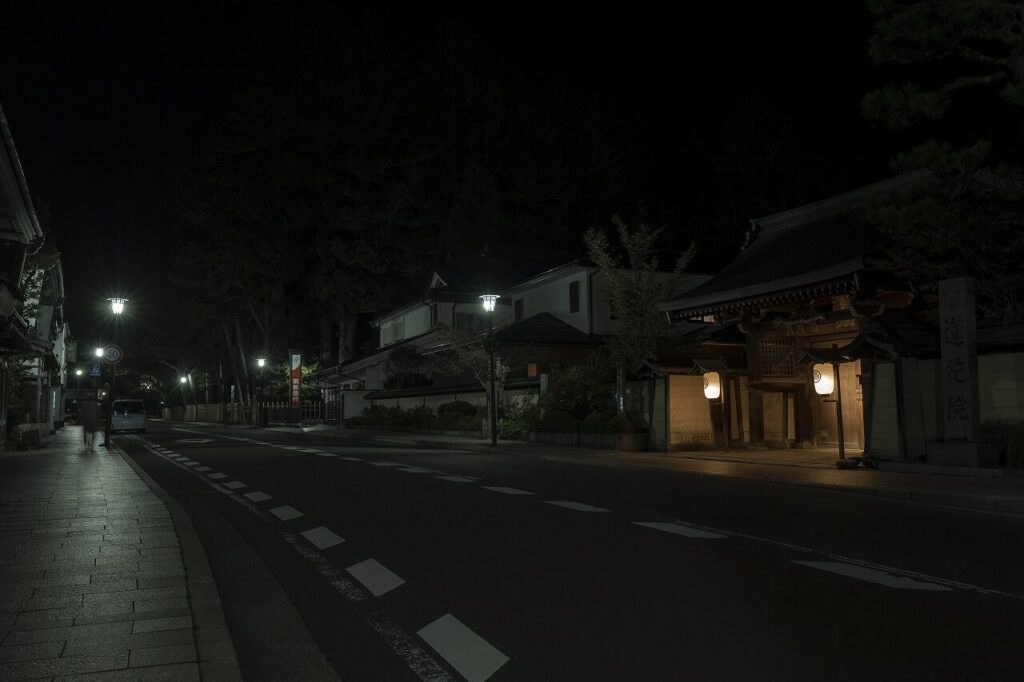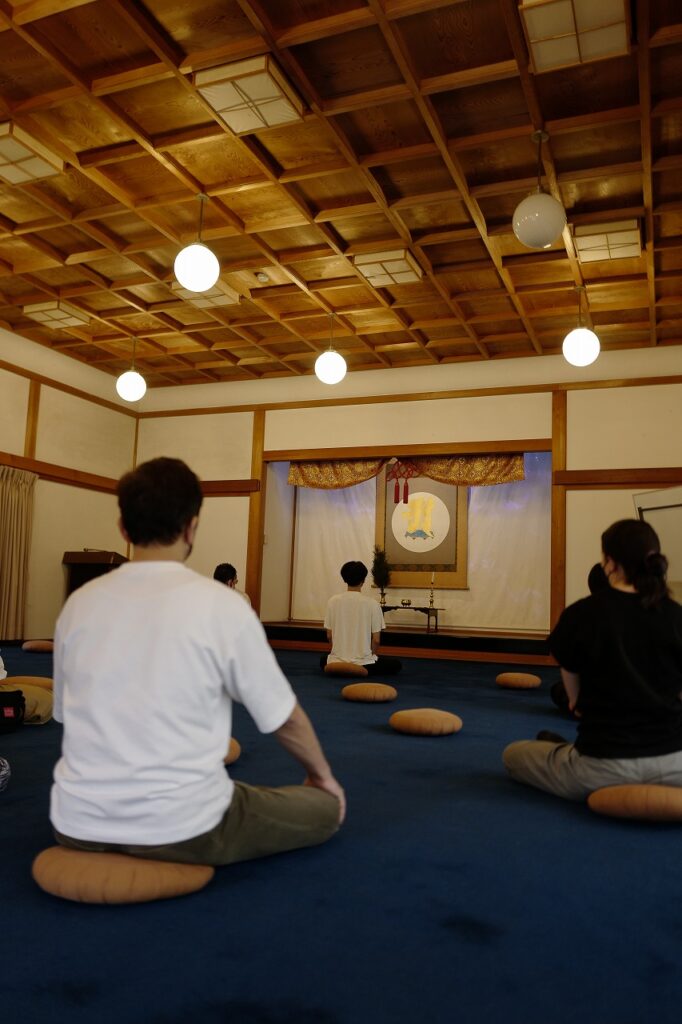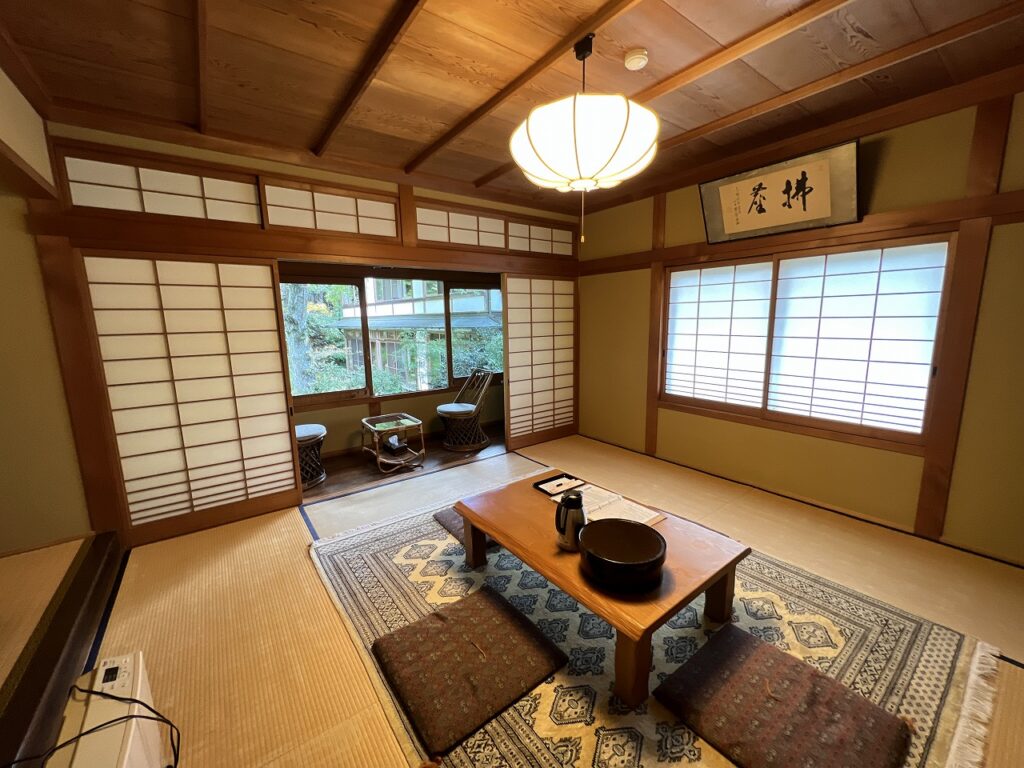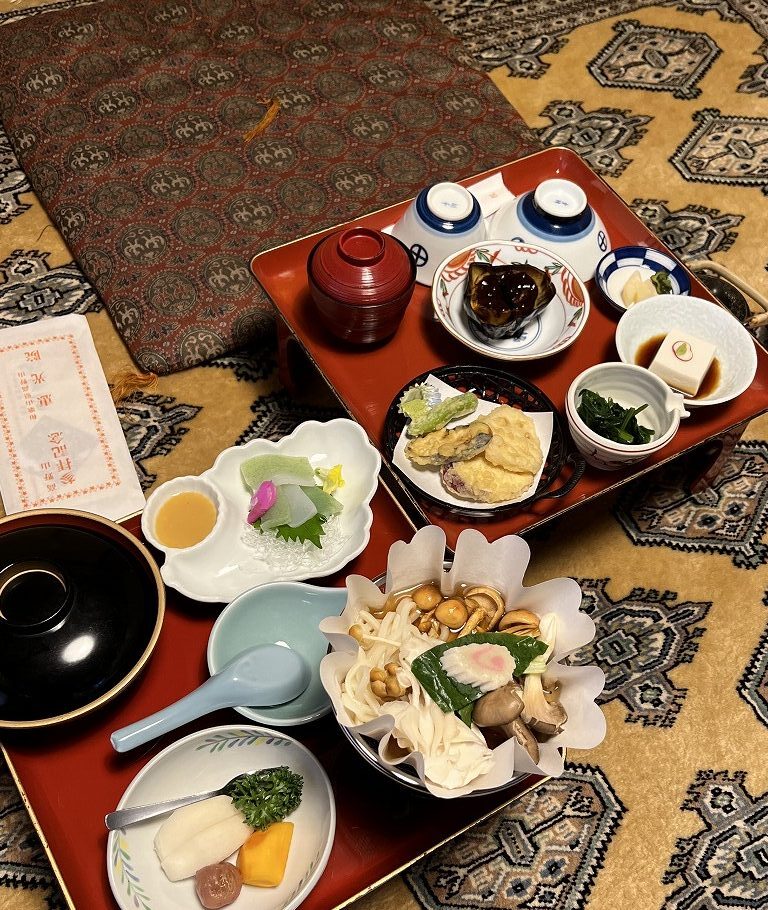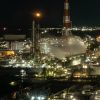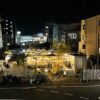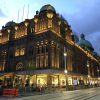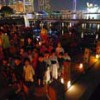2022.10.01-10.03 Shunichi Ikeda + Genki Watanabe
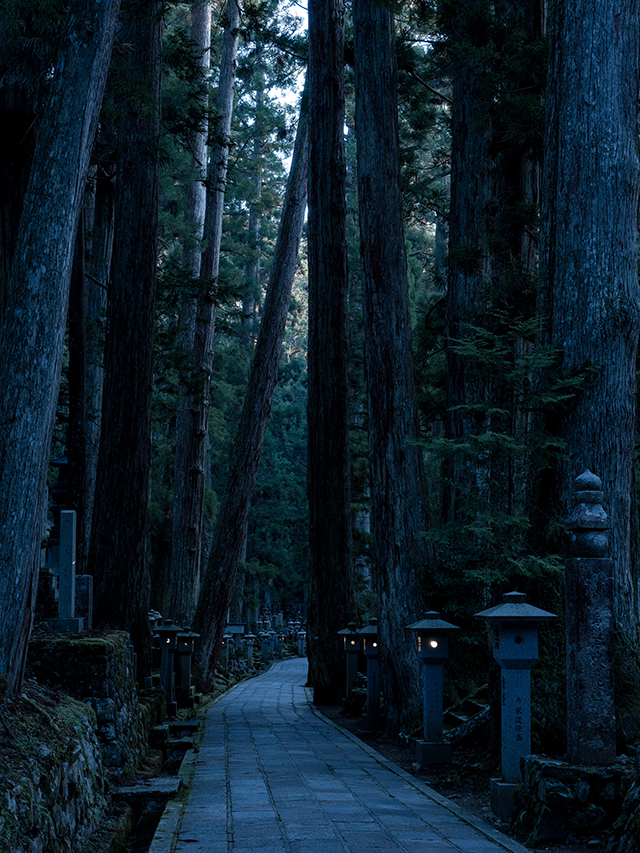
Koyasan (Wakayama Prefecture), a sacred site of Japanese Buddhism with a history of 1,200 years, was inscribed on the UNESCO World Heritage List in 2004 and again in 2016, and is one of the world’s most renowned religious cities. It is also a popular tourist destination, attracting many international visitors prior to the COVID-19 pandemic. Through the distinctive light environment created by the numerous temples and shrines, as well as through the experience of staying at temple lodgings (shukubō), we conducted an investigation into this extraordinary lighting culture from the perspective of the Lighting Detectives.
Koyasan is a town situated in a mountain basin at an altitude of 800 meters, surrounded by peaks of around 1,000 meters in northern Wakayama Prefecture. It was founded about 1,200 years ago, in the early Heian period, by the Buddhist monk Kōbō Daishi (Kūkai) as a sacred site of Japanese Buddhism, with Danjō Garan serving as the central temple complex of this religious city.
Originally, the entire area of Koyasan was considered part of the grounds of Kongōbu-ji Temple.
For us, this was the first time to focus on a religious city in an urban lighting survey. We wanted to examine what the nightscape of this temple town looks like and how the lighting culture of Japan and Buddhism manifests itself in various aspects.
■Okunoin, Kongōbu-ji, Head Temple of Koyasan Shingon Buddhism
Okunoin is an expansive cemetery stretching about 2 km from its entrance to the mausoleum of Kūkai. It is said to contain more than 200,000 graves along its approach, though the exact number remains unknown. Together with Danjō Garan and Kongōbu-ji, Okunoin is one of the most popular sites on Koyasan, and for this lighting survey it was a location we especially wanted to study. For that reason, we visited the site both in the early morning and at night.

After enjoying some shojin ryori (Buddhist vegetarian cuisine) at the temple lodging, we hurried to Okunoin. Even though the sky still held a hint of blue, the dense canopy of towering cedar trees made Okunoin already dark, with the path ahead lost in the shadows.
Lining both sides of the path are two-meter-tall stone lanterns that serve as the main illumination, creating a sacred and solemn atmosphere for the evening nightscape of Okunoin. These lanterns emit a gentle, diffused, warm-white light. They feature a diffuser cover to conceal the light source, much like a traditional Japanese andon (paper lantern), so you can’t see the bulb from the front or back. The sides of the stone are decorated with cutout designs of a full moon, a half moon, and a crescent moon, creating a beautifully shaped light. These lanterns serve to guide the way with a continuous line of light rather than to brightly illuminate the ground itself. The lanterns are installed as close as 2.5 meters apart, with 2500K LED bulbs, and the illuminance was approximately 1.5 lux in the brighter areas.
Unfortunately, it seemed there were concerns about insufficient light with only the lanterns. Bright LED security lights were also installed at various points along the path. These were glaringly bright, and their harsh, sterile 5200K white light ruined the sacred atmosphere of Okunoin, which I honestly found disappointing. The floor illuminance in these bright spots was 11 lux.
The next morning, I woke up before sunrise and went to Okunoin again. Although the tall trees blocked some of the light, the sun still illuminated the vast cemetery spreading out from the path. The sight of the stone lanterns glowing in the damp, dim nature gave me a profound sense of Koyasan’s solemn and sacred world. It’s a beautiful early-morning view of Okunoin that I highly recommend you experience for yourself. (Shunichi Ikeda)
■Okunoin Mando-e
One of the reasons we chose Koyasan as our research destination was to attend the Okunoin Mando-e. The Mando-e is a nighttime event held every August and October at the Lantern Hall in the deepest part of Okunoin, in front of the mausoleum of Kobo Daishi, Kukai. During the ceremony, countless lanterns are lit with the hope that the wishes entrusted to them will be fulfilled.
Photography is strictly prohibited at the mausoleum, so while I don’t have any photos, I’d like to share my experience of the light. As its name suggests, the Lantern Hall is covered with a massive number of reddish, warm-white lanterns on the ceiling, walls, and shelves. The hall also contains decorations and portraits, and in addition to the lanterns, spotlights are used to create a well-defined lighting plan.
As we waited inside for the ceremony to begin, a group of over ten young monks, dressed in brilliant kesa (a ceremonial Buddhist robe), appeared from outside. They lined up in the center of the hall, and the “prayers” soon began. The powerful chanting of the sutras by the monks, combined with the flickering flames of countless deep-orange oil lamps and Japanese candles, seemed to create an indescribably profound and ethereal world.
When I stepped outside to head to our next lighting survey, I discovered another building right next to the hall called the Memorial Lantern Hall. It was filled with an overwhelming number of lanterns.
I was both astonished by the sheer scale and deeply moved. While you could simply call it decorative lighting, I felt there was a powerful cultural significance in the scene—the sight of a building glowing with a massive number of lights, each containing someone’s prayer. (Shunichi Ikeda)
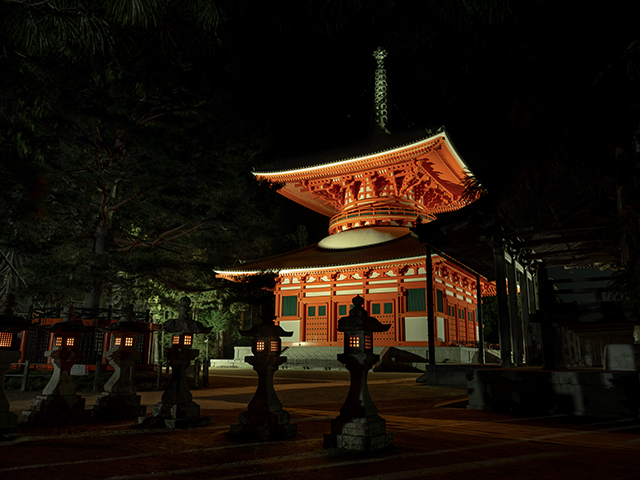
■Status of Nighttime Illumination in Koyasan
I was curious to see the nighttime lighting situation in this religious city on a mountaintop, as illuminating buildings at night is a common practice in urban tourist areas.
Some temples in Koyasan that also serve as shukubo (temple lodging) offer nighttime tours for visitors, including tours of Okunoin. The shukubo we stayed at, Eko-in, also had a night tour, but we decided to explore on our own, worried that our overly “maniacal” approach might make us stand out from the other tourists. Although there were few tourists during our survey due to the pandemic, it’s likely that many people participated in these tours in the past.
We first went to survey the well-known Danjo Garan, Kongobu-ji Temple, and Koyasan Daimon. Danjo Garan is home to the Konpon Daito (Great Pagoda), built according to Kukai’s vision. At night, the Konpon Daito was brightly illuminated by white floodlights from four directions, making it a highly symbolic presence in the surrounding darkness. This suggests its particular importance within Koyasan. Right next to it is the Chumon (Middle Gate), which is lit by fixtures hidden within the building. The warm-white light highlights the vivid vermilion color, and the statues on either side are illuminated with spotlights. While there are many other halls in Danjo Garan, only the Konpon Daito and the Chumon were lit up. We also saw a night tour group during our survey, so it is likely a popular nighttime tourist spot.
However, I should mention that we did notice some sloppiness in terms of aesthetic quality. The floodlight fixtures for the Konpon Daito were placed close to the path and created a glare for pedestrians, and the lantern covers of some stone lanterns had been left off.
■Status of Nighttime Illumination in Koyasan
After leaving Danjo Garan, we headed toward the Daimon (Great Gate), the main entrance to Koyasan. The Daimon is also a two-story vermilion gate, just like the Chumon (Middle Gate) at Danjo Garan. However, its nighttime appearance is different because it’s broadly illuminated by white floodlights from a distance, similar to the Konpon Daito (Great Pagoda).
Next, we went to investigate the nighttime lighting of one of our key targets, Kongobu-ji Temple, only to find the gate was closed and we couldn’t get in. A quick search revealed that Kongobu-ji Temple closes at 5 p.m., so it was off-limits from the start, which was a huge disappointment. As we dejectedly walked back to our temple lodging, we discovered an unusual-looking octagonal temple.
This was the Jofuku-in Mani Hoto (Jofuku-in Mani Pagoda), also known as the Biruma Senbotsusha Kuyoto (Burmese War Memorial Pagoda). Along the road, a large number of lanterns were placed under the eaves, which were faintly lit with white light. Its distinct appearance really caught our eye. We concluded that exterior lighting is only used in a limited way at public, open locations like Danjo Garan and the Daimon. (Shunichi Ikeda)
■Status of Urban Nighttime Illumination
The urban area of Koyasan is centered around Odawara-dori Street, which stretches for about 2.5km from the Daimon (Great Gate) to Okunoin. The street is lined with restaurants and tourist centers. While it’s a lively atmosphere with tourists and residents during the day, it suddenly becomes deserted around 5 p.m., as the sun sets. By 7 p.m., only the streetlights and the quiet glow from scattered temple gates along the street are visible.
The street is equipped with roughly 5-meter-tall pole lights that illuminate the road in white. Although large temples have lit up their gates and buildings, there is no other commercial lighting. The pole lights use 4500K light sources, while the temple lighting is a uniform 3000K. At first, this seemed sterile and lonely, but I felt it effectively highlights the low color temperature of the temple lighting and lanterns. Public restrooms are installed in various places along the street, and all their lighting is controlled by motion sensors. This suggests a clear plan to eliminate unnecessary light wherever possible.
The streetlights, which have a polygonal head, are installed on both sidewalks at 25-meter intervals, providing a floor illuminance of between 0.5 and 20 lux. While the design and color temperature of the fixtures were consistent throughout the street, the lack of glare control and the gridded shape created shadows on the road. From an aesthetic and visibility standpoint, I felt the fixtures should be changed to a more diffusive material like frosted glass. (Genki Watanabe)
■Shukubo Experience
One of the goals of our survey was to stay at a shukubo to experience temple life and its lighting environment. Originally, a shukubo was a lodging facility exclusively for monks and pilgrims, but it now also welcomes tourists. Its history is long; by the Heian period (794–1185), a form of lodging was already established for nobles, samurai, and general pilgrims, helping to popularize temple and shrine pilgrimages. At these facilities, you can observe the monks’ living quarters, and schedules are arranged for experiences that simulate their daily practices. As part of our survey, we participated in rituals like goma-taki (a fire ritual) and Ajikan (a meditation practice).
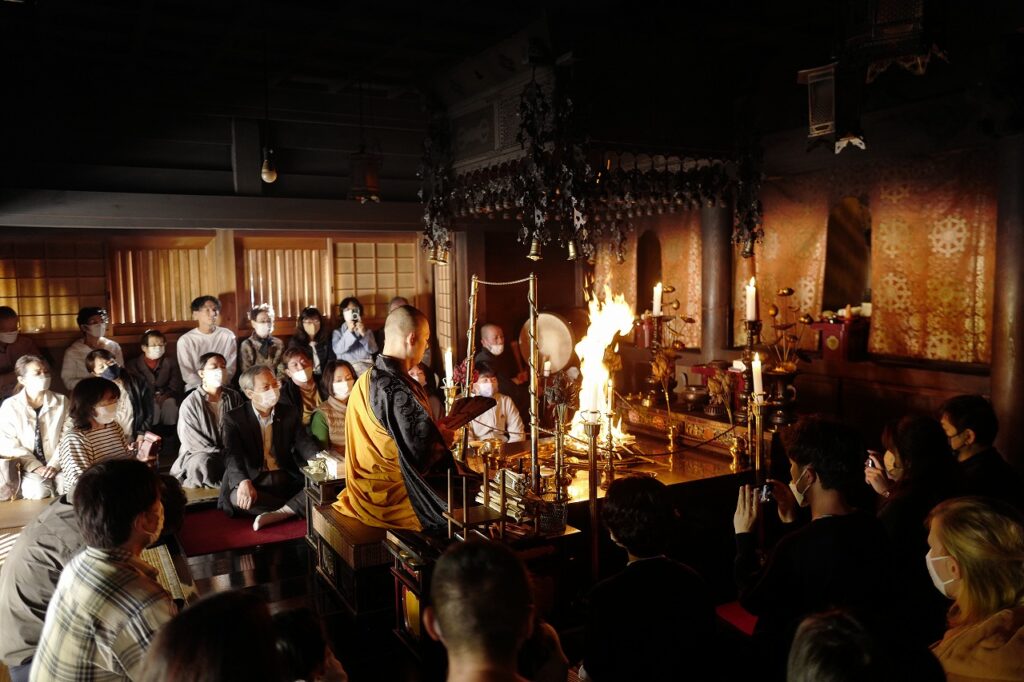
Eko-in, where we stayed, has a history of about 700 years and is a very splendid temple with an impressive gate and garden. Many of the visitors were tourists, including some from overseas.
After checking in at 3 p.m., we were shown to a room of about 8 tatami mats. We could see the well-maintained garden from the room, which let in plenty of light. After confirming the temple’s facilities and meal times, we first decided to participate in the evening Ajikan experience. Ajikan is a meditation method to regulate posture and breathing, and many guests seemed to participate to clear their minds of worldly desires. About 20 participants gathered in a 200-square-meter hall, sitting cross-legged and facing a scroll with a character drawn on a lotus flower in the center of the
room. After a full explanation from the monk, everyone entered a state of meditation while listening to the sound of the sutras being chanted.
When the Ajikan began, all the lights except for the central scroll were turned off. In the dim light, only the character was illuminated, a deliberate effort to help participants eliminate distracting thoughts. After the Ajikan experience, it was time for the dinner we had been looking forward to before our nighttime survey. The meal was shojin ryori (Buddhist vegetarian cuisine), so no meat
was used, but it was incredibly colorful and made with a wide variety of ingredients. By imitating the flavors and textures of meat dishes, the meal was much more satisfying than we had expected.
Early on the second day, we experienced the goma-taki, which was one of the highlights of our temple lodging stay. The goma-taki is a representative ritual of Mikkyo (Esoteric Buddhism) in which a monk, in the presence of the Gohonzon (the main devotional image), burns various offerings in a fire to ward off misfortune and disaster.
As the surroundings began to grow lighter, we finished our morning service in the main hall and moved to another location where the goma-taki began. Before the fire was lit, the main image was illuminated by the white morning light coming from the entrance behind the monk. As the flames rose, they cast a red glow on the monk’s face as he single-mindedly chanted the sutras. The scene was incredibly powerful and compelling, and it was a deeply convincing experience for me, showing why fire is used in so many diverse rituals that transcend faith. (Genki Watanabe)
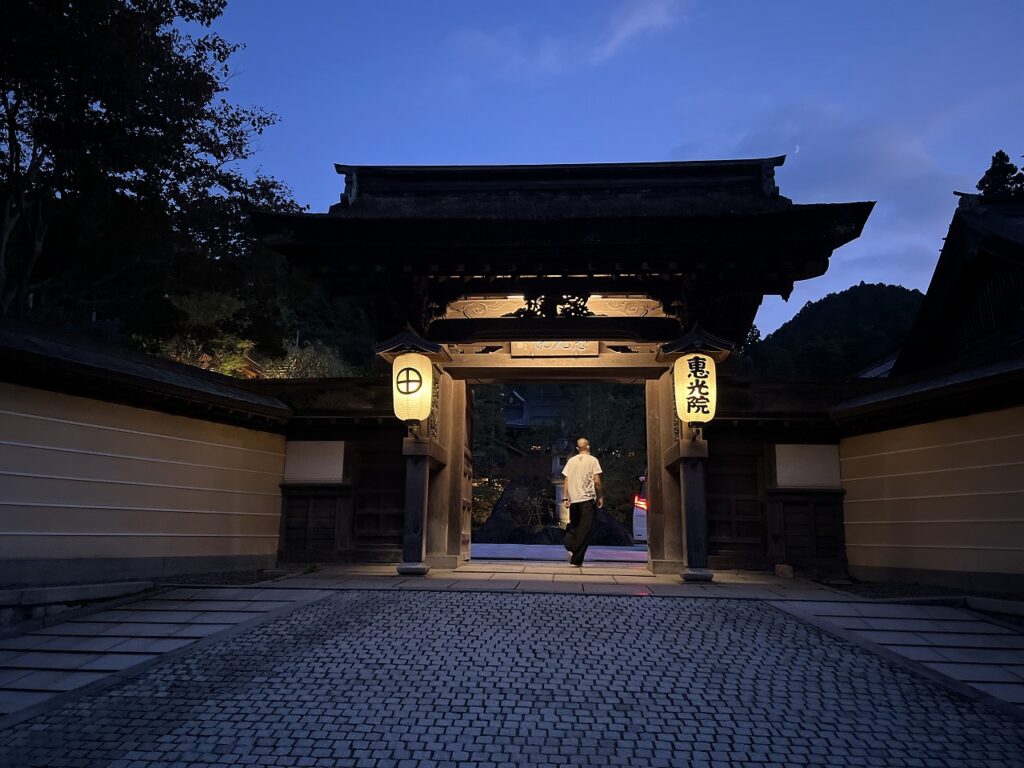
■Conclusion of the Survey
We went to Koyasan with great curiosity to survey the lighting in this sacred place. I’m sure the monks must have thought we were a suspicious bunch, wandering around Okunoin and the town every night taking photos and measuring illuminance. I’d like to apologize for that here! The Buddhist lighting we encountered in Mt. Koya wasn’t just simple illumination; it was deeply intertwined with culture. The flames we experienced during the morning service and rituals at the temple gave us a powerful appreciation for a lighting culture that has been passed down through the ages. (Shunichi Ikeda)
